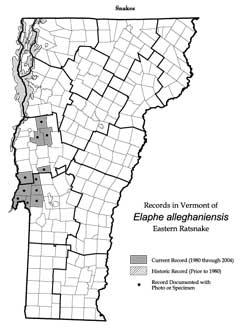Pantherophis alleghaniensis
Eastern Ratsnake
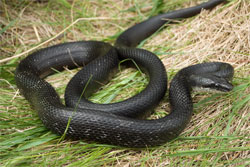
Photo by N. Arms.
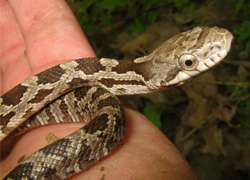
Photo by K. Briggs. Juvenile Ratsnake. This pattern disappears as the snake gets to be approximately 20 inches long.
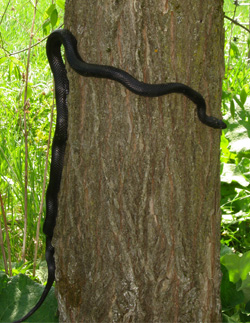
Photo by K. Briggs.
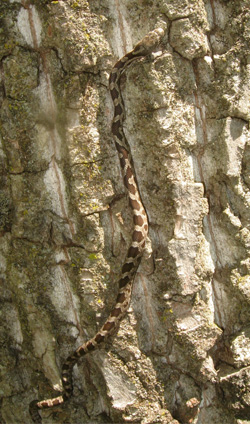
This pattern disappears as the snake gets to be approximately 20 inches long.
Photo by K. Briggs.
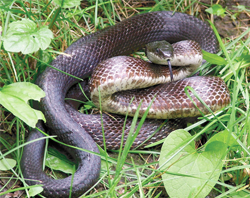
Photo by F. Putnam.
More images from google
Identification
The adult Eastern Ratsnake is black, but usually shows remnants of its juvenile pattern. It is a black and white checkerboard on the front half, and then turns to a solid dark tone towards the tail. The Ratsnake has weakly keeled scales. Adults may be 5-6 feet long (the longest documented in Vermont is 75 inches).
Young Ratsnakes under 20 inches long have a pattern similar to Milksnakes, but they do not have the white "Y" on the back of the head that Milksnakes have. In addition, the blotches on the young Ratsnakes have corners so that they are more "X" shaped, rather than round. By the time Ratsnakes reach three feet in length they are mostly black. Unlike Racers, Ratsnakes have a pattern on their underside.
Range/Habitat
The Eastern Ratsnake is typically found in and around old buildings, old fields, and edges near rocky areas and ledges.
Status
This species has a state natural heritage rank of S2 (rare). The Eastern Ratsnake has been designated a Species of Greatest Conservation Need (high priority) in Vermont’s Wildlife Action Plan and is threatened in Vermont. Please report all sightings of this species in Vermont. Take photos if possible. Even historic sighting information is useful.
More Info
E. alleghaniensis used to be called E. obsoleta.. In 2007, the scientific named changed from Elaphe alleghaniensis to Pantherophis alleghaniensis
- Elaphe obsoleta at Animal Diversity website
- Elaphe obsoleta at UMass NREC website
- Elaphe alleghaniensis in the Vermont Agency of Natural Resources’ Wildlife Action Plan (PDF)
Species summary written by Kaile Burgess.
